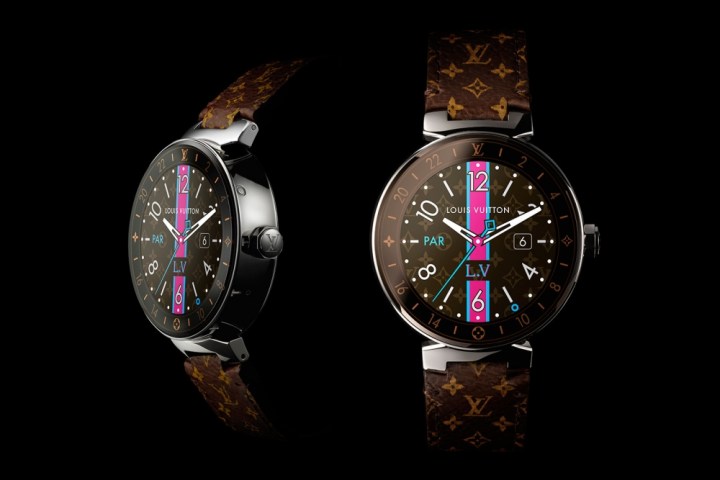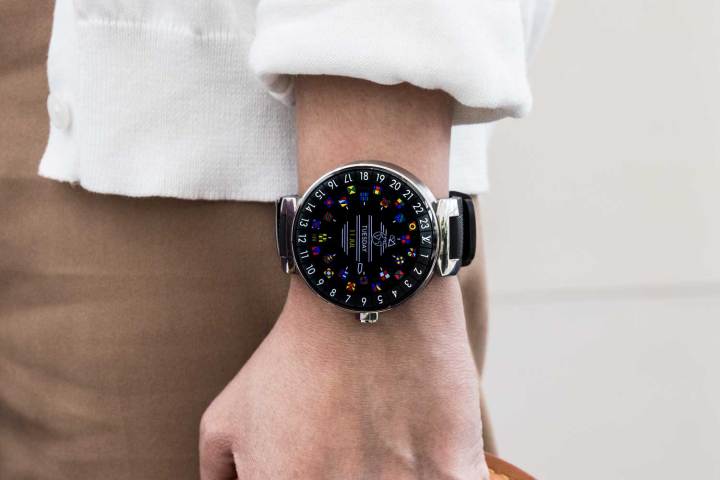
You’d expect spectacular craftsmanship for an asking price that costs more than some used cars, and you’d be right — Louis Vuitton hasn’t taken any shortcuts. The Tambour Horizon’s case, which is made in Switzerland, features a convex design that maximizes its diameter while minimizing its weight. It comes in three styles — stainless steel, brushed steel, and black — with 60 strap options, including 30 for men and 30 for women.
But the Tambour Horizon’s real draw are Vuitton-inspired touches like City Guide, which recommends restaurants and places of interest based on your location, and Flight, which alerts you to changes in your flights and itinerary. The watch will also be available in China, albeit without Google services — Louis Vuitton has partnered with local platforms like Weibo so that corresponding platforms in the West automatically switch for usage when appropriate, according to the New York Times. We’re unclear how this really works, and we have reached out to Louis Vuitton for clarification.

Under the hood, the Tambour Horizon is a little more like its Android Wear siblings than Louis Vuitton would probably care to admit. It has a 1.3-inch 390×390 AMOLED screen that’s about the same resolution as the Huawei Watch 2, along with a Qualcomm Snapdragon 2100 smartwatch processor. The Tambour Horizon omits a heart rate-tracking sensor and skimps on RAM a tad, opting for 512MB instead of its rivals’ 1GB (the Fossil Q Founder) and 768MB (LG Watch Style). It packs 4GB of storage, or about enough to hold about 800 songs.
Then there’s the price. At $2,450 (or $2,900 for the black version), the Tambour Horizon is far and away one of the most expensive Android Wear watches on the market. Unlike luxury brands like Tag Heuer, which put the purchase of smartwatches toward analog watches, the Tambour Horizon comes with no trade-up or incentives. But the Tambour Horizon is less about function and more about form.
“For us, the aesthetic is nonnegotiable,” Michael Burke, chief executive of Louis Vuitton, told the New York Times in an interview. “There’s a lot of ugliness out there, [and we] want to participate in the future.”
In any case, Louis Vuitton has high hopes for the Tambour Horizon, which it thinks can double sales. “In the early 20th century we built helicopters,” Burke said. “It didn’t mean we were going to turn into Boeing or Airbus. But it meant we were part of the conversation.”


